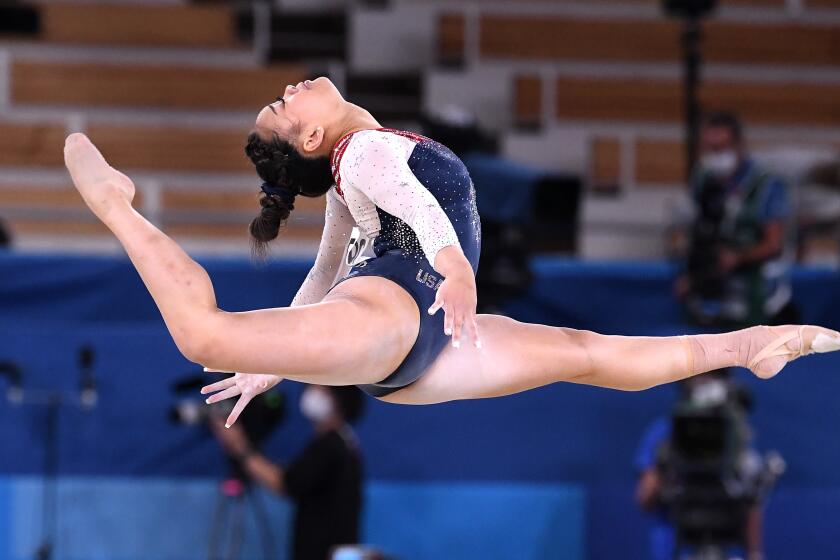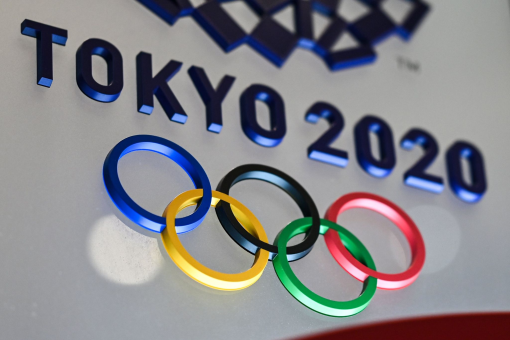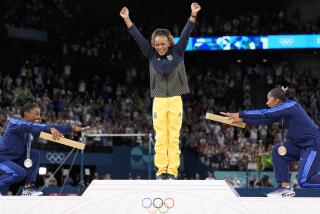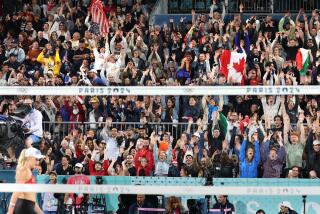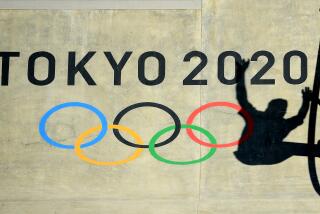Tokyo Olympics were a showcase of resilience amid an attempt at normalcy
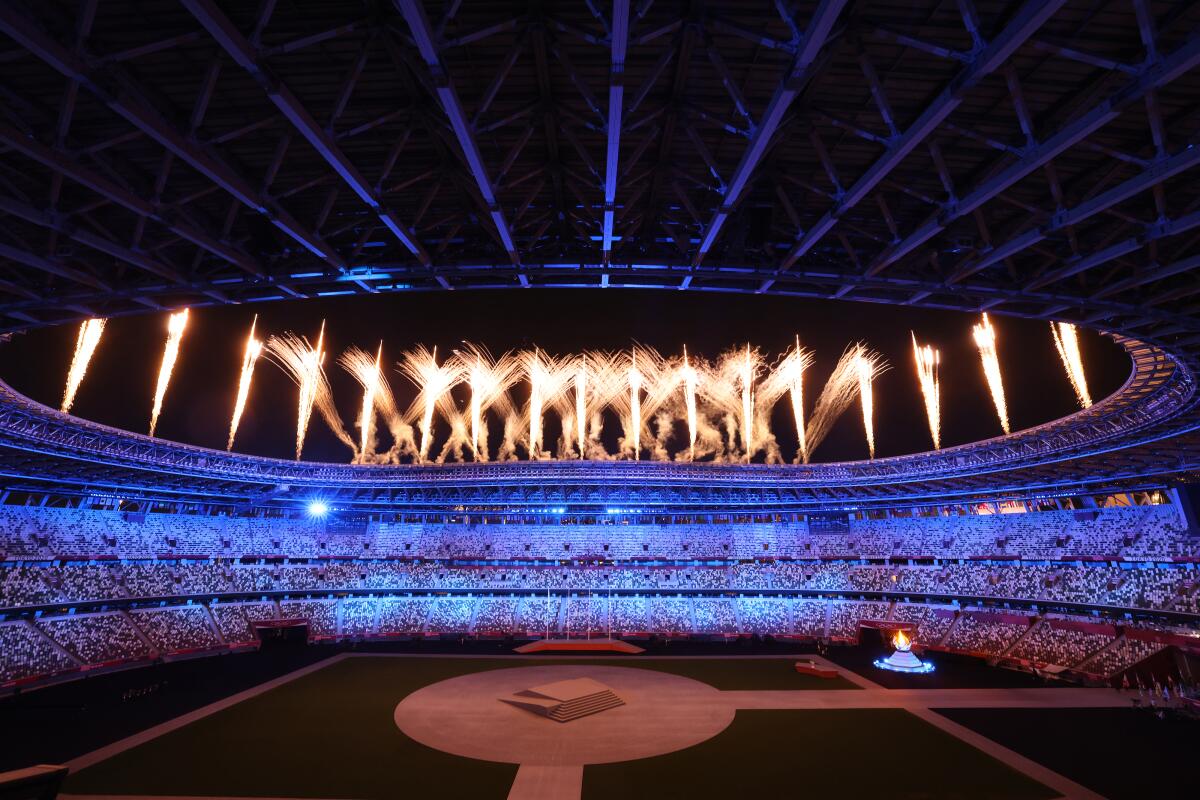
- Share via
TOKYO — A tropical storm swept into the city before dawn, gusts of wind bringing heavy clouds and drenching rain, as if the Tokyo Olympics didn’t have enough problems.
The COVID-19 pandemic had forced a year’s postponement and, with much of Japan still in a state of emergency, cancellation remained possible to the last moment. Even as the massive sporting event lurched ahead, spectators were banned, leaving athletes to compete in eerily quiet stadiums and arenas.
“Some were already speaking of a ghost Games,” International Olympic Committee President Thomas Bach said.
On Sunday, with inclement weather threatening to ruin the closing ceremony, the sky lifted and brightened by late afternoon. After 17 rocky days, these Summer Games had once again found a way to get by.
With the closing ceremony set to mark the official end of the Tokyo Olympics, we look at the six greatest moments from the Games.
As 100-meter champion Lamont Marcell Jacobs of Italy said: “Finally we’ve managed to do it, so that’s a positive way to look at it.”
For their goodbye show, local organizers transformed Olympic Stadium into one of Tokyo’s well-known city parks, covering the field with swaths of real grass and pathways. Kids skateboarded, people did yoga, bicycle riders whizzed past.
If the scene attempted to evoke a sense of normalcy, it also reinforced the extraordinary and often contradictory nature of the Tokyo Games.
A hint of sadness marked the last three weeks, with no crowds buzzing outside stadiums, no fans gathering in central plazas, nothing to make it feel special. The Olympic cauldron, displayed on a popular esplanade, was surrounded by blue-shirted volunteers who — because of coronavirus restrictions on crowding — barked over loudspeakers, telling people not to stop, to keep walking.
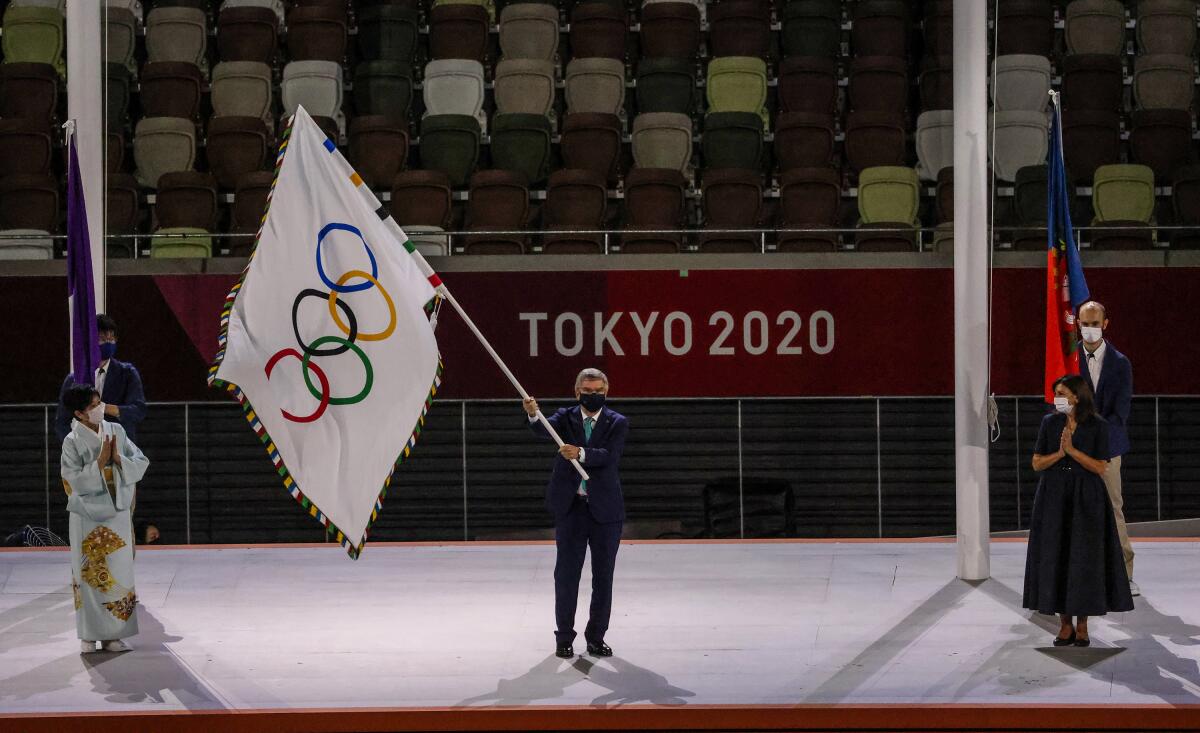
The competition sometimes felt just as sterile, like sports in a laboratory. Reverse somersaults, double layouts and three-point shots were greeted with silence or, worse, the echoed clapping of a half-dozen teammates.
“I’m not going to lie,” said Lilly King, a U.S. swimmer who won silver and bronze. “It’s a little strange.”
Making all of this work required masks, daily saliva tests and, in some instances, quarantines. Winners had to pick up their own medal to put around their neck.
Yet athletes continually expressed both gratitude for the chance to compete and a willingness to adapt. “I never surrender to the circumstances,” Russian fencer Larisa Korobeynikova said. “I always believed that the Olympics would take place and that is what exactly happened and [it was] fantastic.”
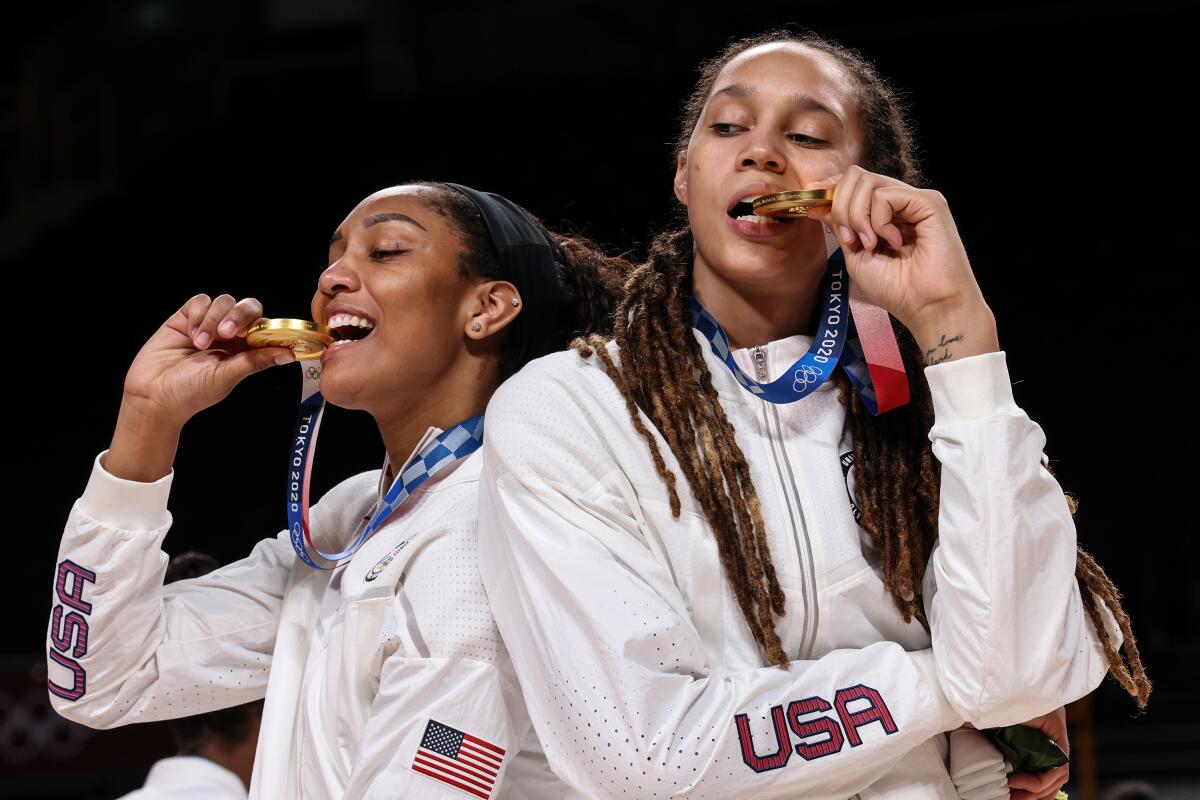
For the Americans, swimmer Caeleb Dressel excelled, as did gymnast Suni Lee and the men’s and women’s basketball teams.
“This one feels good because we went through a lot,” NBA star Kevin Durant said. “COVID, the kind of bubble we were in, no fans, no one expecting us to lose.”
Even Simone Biles, who missed most of the gymnastics competition with a case of the “twisties,” succeeded in raising awareness about mental health. And Tokyo provided one of the greatest races in track history when Norway’s Karsten Warholm dueled American Rai Benjamin in the 400-meter hurdles. Benjamin broke the world record but Warholm ran even faster, shattering the event’s 46-second barrier.
“The last 20 meters, I couldn’t even feel my legs,” Warholm said. “I just ran for my life.”
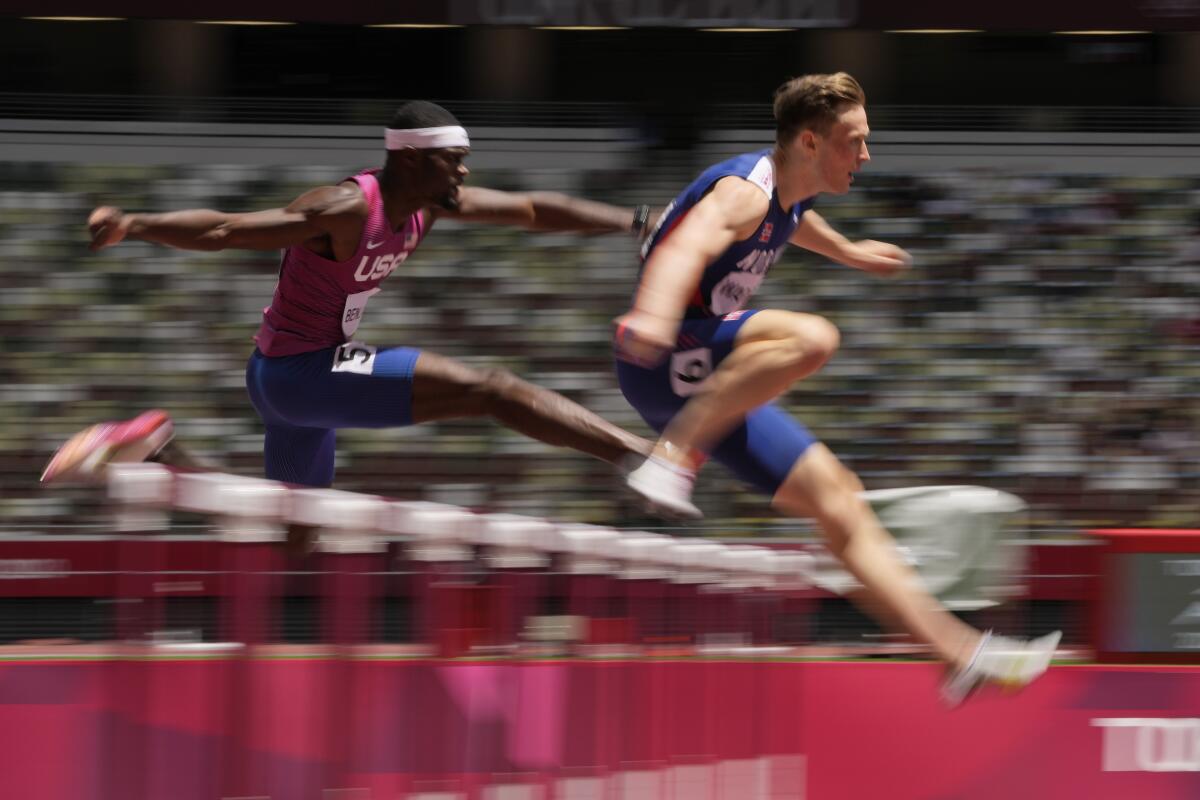
Sunday night, the stadium where they raced sparkled with fireworks and lighting that turned the field into a checkerboard of red, blue and yellow. A musical theater troupe dressed in formal kimono and hakama sang, followed by a brass band playing a ska version of “Sukiyaki.” Unlike the willy-nilly rush at the 1964 Tokyo Games, athletes entered calmly and somewhat distanced, at least until they clumped together on the lawn.
By then, the Americans had won the medals table, an unofficial scoreboard that makes some purists cringe. After a rough first week, they rallied to finish with 39 golds and a total of 113 medals, not as good as in Rio de Janeiro five years ago, but ahead of second-place China.
Third-place Japan fell short of its original goal of 30 golds but managed 58 medals in all. Success on the playing field may have helped soothe a conflicted populace.
Concerns over COVID-19 had prompted demonstrations amid the crowd that surrounded Olympic Stadium at the opening ceremony; on Sunday, barricades kept onlookers farther away.
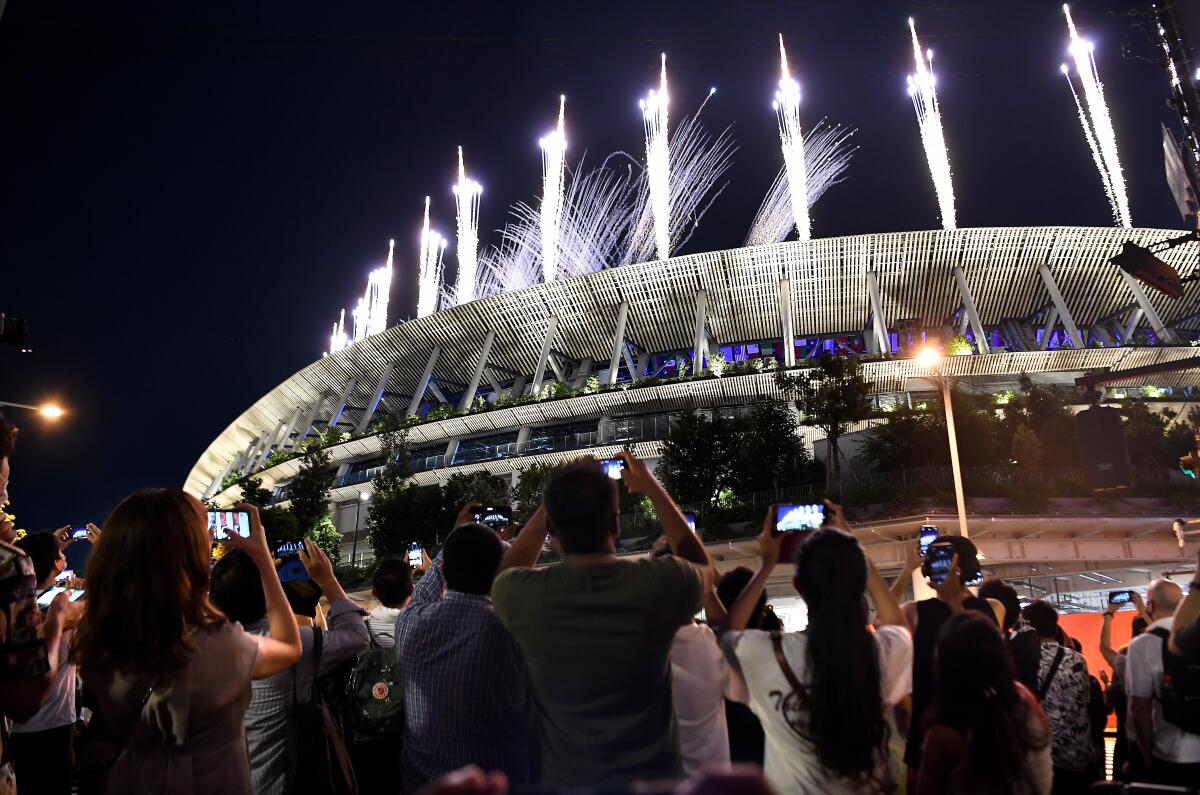
But over the course of the Games, residents also gathered for a very different reason on hills and bridges near the sport climbing wall, BMX racing track and other venues — they wanted to get a look.
“I think sport right now, in the world we are living in, is not only important, but necessary,” tennis gold medalist Alexander Zverev of Germany said. “I think it’s necessary for people to have something to watch, something to cheer for.”
Each day, organizers released detailed statistics on COVID-19 cases among 42,000 athletes, coaches, journalists and workers inside the bubble. There were 26 cases on Sunday, bringing the total to 436.
The IOC boasted that, with more than 600,000 tests administered, the positivity rate remained below 0.08%. No major events had to be canceled and no big names were yanked from play because of positive results.
“I think it’s fair to say that the Olympic community here in Tokyo has been the best-tested community anywhere in the world during the last few weeks,” Bach said.
But, surrounding the bubble, the pandemic accelerated through a city of 14 million. New cases in Tokyo started at 1,359 on the day of the opening ceremony and exceeded 5,000 a day by the Games’ final week.
There was concern that people getting together to watch the Games, especially in bars and restaurants, might be to blame. A member of the Japanese government’s coronavirus panel pointed at several factors.
“The rapid surge in cases can be attributed to an increased movement of people due to a four-day holiday weekend, the Olympics and Paralympics, and summer vacations,” Toho University professor Kazuhiro Tateda told the NHK news service.
Though the closing ceremony was mostly light and breezy, officials had no choice but to address the subject. Seiko Hashimoto, president of the Tokyo 2020 organizing committee, told the assembled athletes they had “accepted what seemed unimaginable, understood what had to be done and, through hard work and perseverance, overcome unbelievable challenges.”
“Yes,” Bach said, “these were an unprecedented Olympic Games.”
Nothing in the event’s modern era can compare to what happened in Tokyo. At least, not until the Beijing Winter Olympics in February.
More to Read
Go beyond the scoreboard
Get the latest on L.A.'s teams in the daily Sports Report newsletter.
You may occasionally receive promotional content from the Los Angeles Times.

